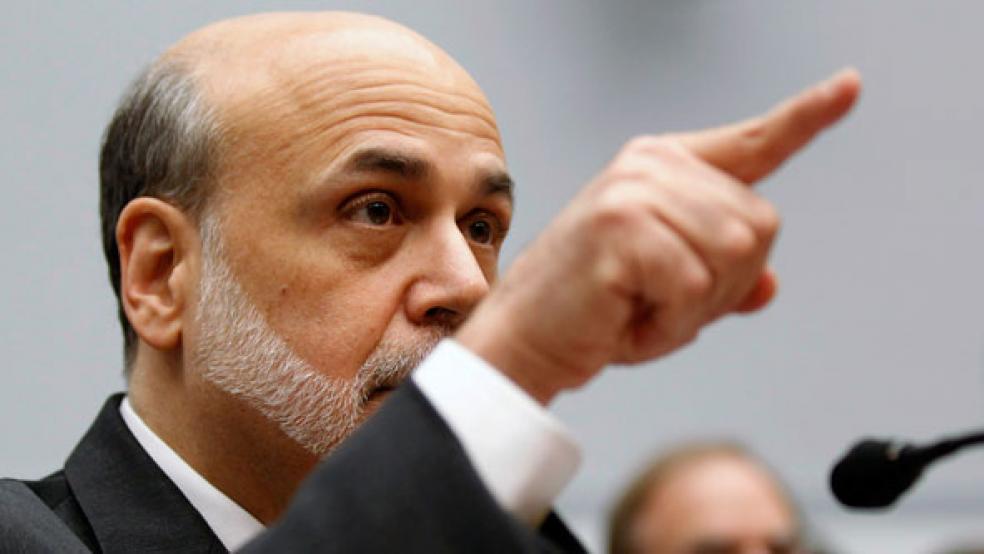The Federal Reserve on Thursday opened a major new offensive in the battle to reduce unemployment, launching its most extensive effort to stimulate the economy in years.

The Fed announced a new round of bond purchases targeting the mortgage market, saying it would purchase $85 billion in bonds per month through the rest of the year, and then $40 billion per month until the economy doesn’t need the support anymore.
In addition, the Fed announced that it is extending its plan to keep interest rates ultra-low into mid-2015, roughly a half-year longer than it previously planned. In a surprising additional move, the Fed used stark language in its policymaking statement to make clear it would continue to support the economy “for a considerable time after the economic recovery strengthens."
In the statement, the Fed added that without additional stimulus, “economic growth might not be strong enough to generate sustained improvement in labor market conditions.”
In totality, the measures will likely bring down interest rates — which are already at record lows — to support lending, borrowing and spending. They are the Fed's most dramatic actions since 2010, and arguably the biggest package of actions since the Fed’s unprecedented intervention during the 2008 financial crisis.
By extending interest rate guidance and launching a new round of bond purchases, commonly known as “quantitative easing,” the Fed action is opening a new front in its efforts to stimulate the economy.
In 2008 and 2009, the Fed intervened in the market to end the financial crisis. In 2010, it worked its will to successfully fight deflation, or falling prices, a dangerous phenomenon that can wreak havoc on a nation’s economy and well-being.
Now, the Fed is poised to take measures to try to avoid the type of “lost decade” that Japan suffered after its financial crisis and that Europe seems increasingly likely to face now.
It is a measure of the Fed’s concern about the path of the economy that, more than three years after the growth restarted, it is taking dramatic, unprecedented actions. And it made clear Thursday it would continue to do so if necessary.
“Growth in employment has been slow, and the unemployment rate remains elevated,” the Federal Open Markets Committee said. “If the outlook for the labor market does not improve substantially, the Committee will continue its purchases of agency mortgage-backed securities, undertake additional asset purchases, and employ its other policy tools as appropriate until such improvement is achieved in a context of price stability.”
Fed Chairman Ben S. Bernanke, in a major speech in Jackson Hole, Wyo., last month, said he had grave concerns about the high level of unemployment in the country and worried that it would permanently damage the economy if not dealt with promptly.
At 2 p.m. Thursday, the Fed will release updated economic projections, followed by a Bernanke press conference at 2:15.
The Fed’s actions Thursday are likely to inject it further into the political debate. Republicans and conservative economists have been hostile to the idea of new Fed stimulus, saying it could unleash the bogeyman of inflation and also spur excessive borrowing by the federal government by keeping Treasury rates artificially low.
But the Fed is carrying the burden of acting in part because lawmakers have been unable to forge a consensus - either on how to stimulate the economy in the short term or forge a long-term deficit reduction deal that would end uncertainty about the fiscal cliff, the series of tax hikes and spending cuts likely to send the economy into recession next year.
It’s not not known how much the Fed’s actions, though dramatic, will affect economic growth. Economists suggested in the past the actions would only reduce the unemployment rate by a few tenths of a percentage point, but the significance of the Fed action was greater than anticipated and thus the impact would be greater too.
Fed officials have been sympathetic to the risk that dramatic action could spur inflation, which would first affect middle-class necessities like food and gas. To date, however, there has been little evidence that inflation is a true risk yet.
The Fed is acting amid some positive signs for the economy but also amid a number of deeply worrisome developments. The housing market, long depressed, has given some hints of improving. But the labor market has been worsening.
In the past three months, the economy has added an average of 100,000 jobs a month, not even enough to keep up with the 120,000 or so needed to match the number of new people searching for jobs as a result of population growth. Employers need to generate closer to 200,000 jobs a month in order to significantly bring the unemployment rate down.
What’s more, the economy faces serious risks. Income was up only 1.4 percent in the second quarter, suggesting that consumers will have little to spend this holiday season, which could be a drag on growth. In addition, the U.S. economy faces a triple threat, one at home and two abroad.
At home, there’s anxiety over whether lawmakers will able to resolve the “fiscal cliff.” In Europe, officials have been taking some positive steps, but the continent is in recession, and a financial crisis burns. And, finally, emerging markets, such as China and Brazil, are slowing down.
Still, there are significant questions about how much the Fed’s actions can do to help the economy. Two ways Fed policy works is by lowering mortgage rates and boosting stock prices, but mortgage rates are already at lows and stock prices are booming.
The Fed earlier this year extended its interest rate guidance once before and announced a smaller bond buying program in June. Still, a critical measure of the labor market, the employment to population ratio, is worse than it was at the start of the year.
Economists generally say the Fed’s actions are likely to reduce unemployment over the next year by between .1 and .3 percentage points.


